 | TODAY IN SCIENCE HISTORY
NEWSLETTER - 25 DECEMBER |
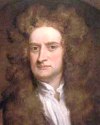 On 25 Dec 1642, Isaac Newton was born, an English physicist and mathematician who made seminal discoveries in several areas of science, and was the leading scientist of his era. There is so much to know about his scientific life and times, chances are you'll find something new (or at least a reminder of things half-remembered) in this biography, a chapter from Sarah Bolton's Famous Men of Science (1889). On 25 Dec 1642, Isaac Newton was born, an English physicist and mathematician who made seminal discoveries in several areas of science, and was the leading scientist of his era. There is so much to know about his scientific life and times, chances are you'll find something new (or at least a reminder of things half-remembered) in this biography, a chapter from Sarah Bolton's Famous Men of Science (1889). If you come across a different listing of Newton's birthdate as 4 Jan 1643, and wonder which is correct—they both are, sort of! Puzzled? If so, you need to check the meaning of Old Style (Julian calendar) and New Style (Gregorian calendar) dates. Pope Gregory's calendar was adopted to correct an accumulated discrepancy since ancient Roman times, but that didn't happen in Britain until 2 Sep 1752, which was followed by 14 Sep 1752. Newton was long dead by then, so any calendar hanging on the wall on his birthday would have said it was 25 Dec 1642. That's why the Webmaster prefers that date. |
 On 25 Dec 1642, Isaac Newton was born, an English physicist and mathematician who stated now well-known fundamental laws of motion and gravitation. His irascible personality is much less known. Newton grasped intangible properties of nature such as mass, gravity and velocity in an unparalleled leap of the mind. Today's Science Store pick is: Isaac Newton, by James Gleick, one of the most acclaimed of science writers. He details the life accomplishments of this giant among scientists, but also reveals Newton's character as vindictive, and egotistical. This is a book any scientist should read to know more about the man behind his eponymous Laws. It is available New from $8.30. Used from $3.31. (As of time of writing.). On 25 Dec 1642, Isaac Newton was born, an English physicist and mathematician who stated now well-known fundamental laws of motion and gravitation. His irascible personality is much less known. Newton grasped intangible properties of nature such as mass, gravity and velocity in an unparalleled leap of the mind. Today's Science Store pick is: Isaac Newton, by James Gleick, one of the most acclaimed of science writers. He details the life accomplishments of this giant among scientists, but also reveals Newton's character as vindictive, and egotistical. This is a book any scientist should read to know more about the man behind his eponymous Laws. It is available New from $8.30. Used from $3.31. (As of time of writing.). | | For picks from earlier newsletters, see the Today in Science History Science Store home page. | |
 | I do not know what I may appear to the world, but to myself I seem to have been only like a boy playing on the seashore, and diverting myself in now and then finding a smoother pebble or a prettier shell than ordinary, whilst the great ocean of truth lay all undiscovered before me. - Sir Isaac Newton, English physicist and mathematician (born 25 Dec 1642).  |
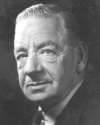 | A drug is a substance which, if injected into a rabbit, produces a paper. - Otto Loewi, German-American physician, physiologist and pharmacologist (died 25 Dec 1961).  |
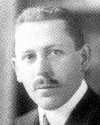 | A considerable number of persons are able to protect themselves against the outbreak of serious neurotic phenomena only through intense work. - Karl Abraham, German psychoanalyst (died 25 Dec 1925).  |
| Before you look at today's web page, see if you can answer some of these questions about the events that happened on this day. Some of the names are very familiar. Others will likely stump you. Tickle your curiosity with these questions, then check your answers on today's web page. |
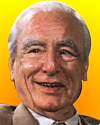 | Ernst August Friedrich Ruska, born 25 Dec 1906, was a German electrical engineer. In 1928 Ruska attempted to focus an electron beam with an electromagnetic lens. He went on to add a second lens and thus produced a new and very useful invention, for which he shared the 1986 Nobel Prize for Physics.
 What was Ruska's invention? |
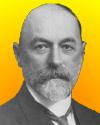 | Herman Frasch, born 25 Dec 1851, was a German-born American scientist who devised the Frasch Process for mining�a drilling, melting and pumping process. It made possible the exploitation of extensive deposits of a certain substance otherwise obtainable only at prohibitive expense.
 What substance is mined using the Frasch process? |
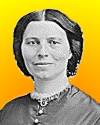 | On 25 Dec 1821, an American woman was born who became a a nursing pioneer during the American Civil War, and was instrumental in the founding of the American Red Cross.
 Can you name this “Angel of the Battlefield”? |
 | Eugen Goldstein (1850-1930) was a German physicist known for his work on electrical phenomena in gases and on cathode rays. He coined the term “cathode ray” (1876) emitted from a cathode, and is also credited with discovering canal rays (1886).
 What are canal rays? |
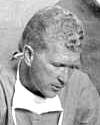 | On 25 Dec 1960, Dr Irving Cooper received a Christmas gift that inspired his invention of the first cryosurgery device (to freeze tissue). It was a simple household device using a capsule of compressed carbon dioxide. He observed the gas was very cold when released and he could direct small squirts from it to freeze tiny areas on the palm of his hand and watch them thaw. He also observed the freezing effect was very localized and isolated from the surrounding tissue.
 What was this gift? |
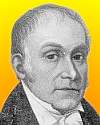 | On 25 Dec of a certain year, the first U.S. ovariotomy (the surgical removal of an ovarian tumour) was performed at his Danville, Kentucky, practice by Dr. Ephraim McDowell, the “Father of Ovariotomy.” His published account created a sensation. His statue stands in the U.S. Capitol.
 In which decade was the first U.S. ovariotomy performed? |
When you have your answers ready to all the questions above, you'll find all the information to check them, and more, on the December 25 web page of Today in Science History. Or, try this link first for just the brief answers.
Fast answers for the previous newsletter for December 24: first law of thermodynamics • Sequoia and Yosemite • decade containing the year 1948 • phosphorus-32. |
 If you enjoy this newsletter, the website, or wish to offer encouragement or ideas, please send feedback by using your mail reader Reply button. If you enjoy this newsletter, the website, or wish to offer encouragement or ideas, please send feedback by using your mail reader Reply button.
Your click on a StumbleUpon, Google+ or Facebook social button on the site webpages is also a welcome sign of appreciation. Thank you for using them. |
To find citations for quotations go to the corresponding webpage by clicking on the “quotes” balloon icon. Sources for the thumbnails appear on today's webpage with the corresponding item.
� This newsletter is copyright 2013 by todayinsci.com. Please respect the Webmaster's wishes and do not put copies online of the Newsletter � or any Today in Science History webpage. (If you already have done so, please remove them. Thank you.) Offline use in education is encouraged such as a printout on a bulletin board, or projected for classroom viewing. Online, descriptive links to our pages are welcomed, as these will provide a reader with the most recent revisions, additions and/or corrections of a webpage. For any other copyright questions, please contact the Webmaster by using your mail reader Reply button. |
--
If you do not want to receive any more newsletters,
Unsubscribe To update your preferences and to unsubscribe visit
this link 


 On 25 Dec 1642, Isaac Newton was born, an English physicist and mathematician who made seminal discoveries in several areas of science, and was the leading scientist of his era. There is so much to know about his scientific life and times, chances are you'll find something new (or at least a reminder of things half-remembered) in this biography, a chapter from Sarah Bolton's Famous Men of Science (1889).
On 25 Dec 1642, Isaac Newton was born, an English physicist and mathematician who made seminal discoveries in several areas of science, and was the leading scientist of his era. There is so much to know about his scientific life and times, chances are you'll find something new (or at least a reminder of things half-remembered) in this biography, a chapter from Sarah Bolton's Famous Men of Science (1889). 



 What was Ruska's invention?
What was Ruska's invention? 
 What substance is mined using the Frasch process?
What substance is mined using the Frasch process? 
 Can you name this “Angel of the Battlefield”?
Can you name this “Angel of the Battlefield”? 
 What are canal rays?
What are canal rays? 
 What was this gift?
What was this gift? 
 In which decade was the first U.S. ovariotomy performed?
In which decade was the first U.S. ovariotomy performed?  If you enjoy this newsletter, the website, or wish to offer encouragement or ideas, please send feedback by using your mail reader Reply button.
If you enjoy this newsletter, the website, or wish to offer encouragement or ideas, please send feedback by using your mail reader Reply button. 

Δεν υπάρχουν σχόλια:
Δημοσίευση σχολίου